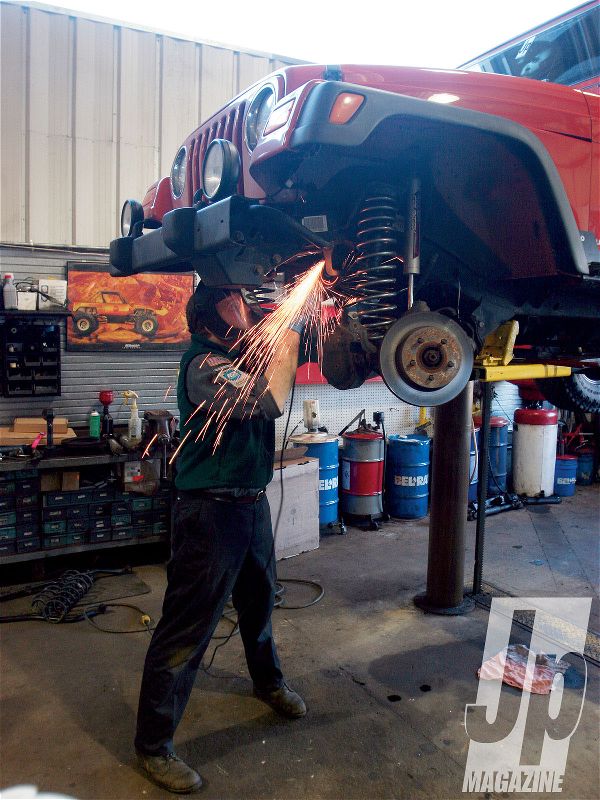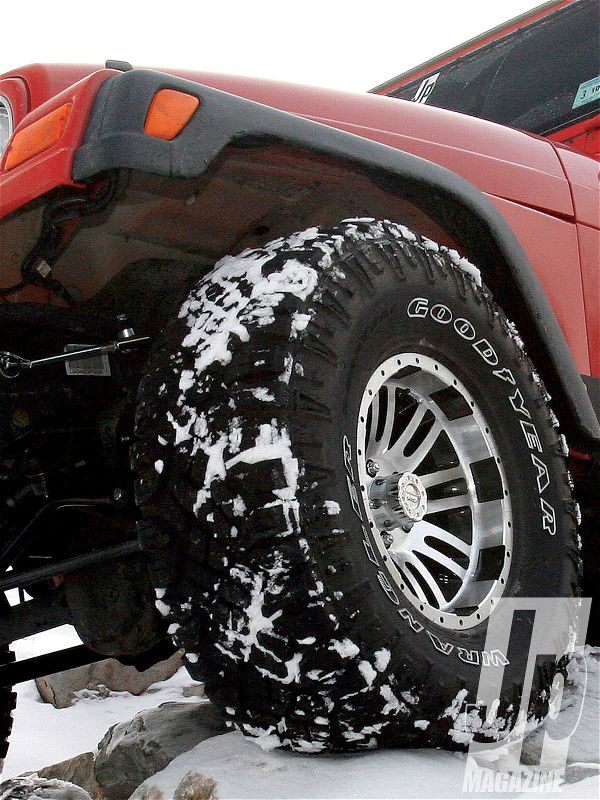
 Pete Trasborg
Brand Manager, Jp
Pete Trasborg
Brand Manager, Jp
We get a lot of questions revolving around driveline vibration, death wobble, worn U-joints, tire fitment, shock length, and so forth. If you are new to lifting Jeeps, these are all questions that you should be asking as there are a lot of hidden costs and potential issues in any modification to the stock suspension.

It doesn't matter if you are installing the most complete lift kit on the market or piecing your lift together from your friends' hand-me-downs, no Jeep or lift install is immune from potential problems that might crop up along the way.
We can't hold your hand and guide you through your specific lift kit on your specific Jeep, but we can give you the knowledge you need in order to ask educated questions and know what to look for when the time comes for your Jeep to get lifted.
For this story we are installing the new 21/2-inch X-series Rough Country Suspension lift kit on a '06 Wrangler Unlimited. The LJ is a great choice for this story, as the '97-'06 Wrangler is one of the most popular Jeeps with our readers, and many of the things we mention here apply to other Jeeps.
In the middle of a snowed-in winter, we took the LJ to OK4WD in Stewartsville, New Jersey, to pick up some expert tips and to make sure that the install was as painless as possible.
Mail Order Meats
There's a lot to be said for not having to go to three different places to get the tires and wheels you want at a decent price. With as many projects as we build, carting tires all over can get old. It's nice to use a place that has decent pricing and ships the tires mounted and balanced right to your door.
We went to Discount Tire for a set of 33x12.50R15 Goodyear Duratracs mounted on 15x8 MB Motoring V-drive rims with a black machined face. This Jeep sees mild trail duties and lots of daily driving, so the Duratracs were a no-brainer. They share the MT/R's carcass, but are a bit less aggressive and have tons of siping making them good for snow and ice. They are the most aggressive all-terrain tire we've seen from Goodyear, and after 5,000 miles and four snow wheeling trips, we are quite happy with them. We wanted an aluminum wheel that was heavy duty, looked good, and didn't require constant polishing. Two months into one of the snowiest winters in recent history, these wheels are no worse for wear from the road salt, and the few rocks we smacked them into didn't crack them or throw them off balance.

The tires showed up within a week to our New Jersey location, protected by cardboard and without any damage from the UPS monsters. Many newer aluminum wheels feature lug nut holes that are too small for our impact sockets or lug wrenches, and it drives us to distraction. These are no different. The big difference is that Discount Tire provided new lug nuts, new locking lug nuts, and a thin-wall adapter socket so that we were able to put the tires on with our lug wrench. Overall, we are happy with the price, and thrilled with the content and customer service. We'd definitely recommend Discount Tire in the future.
PhotosView Slideshow

 PhotosView Slideshow
PhotosView Slideshow


 PhotosView Slideshow
PhotosView Slideshow


 PhotosView Slideshow
PhotosView Slideshow


 PhotosView Slideshow
PhotosView Slideshow


